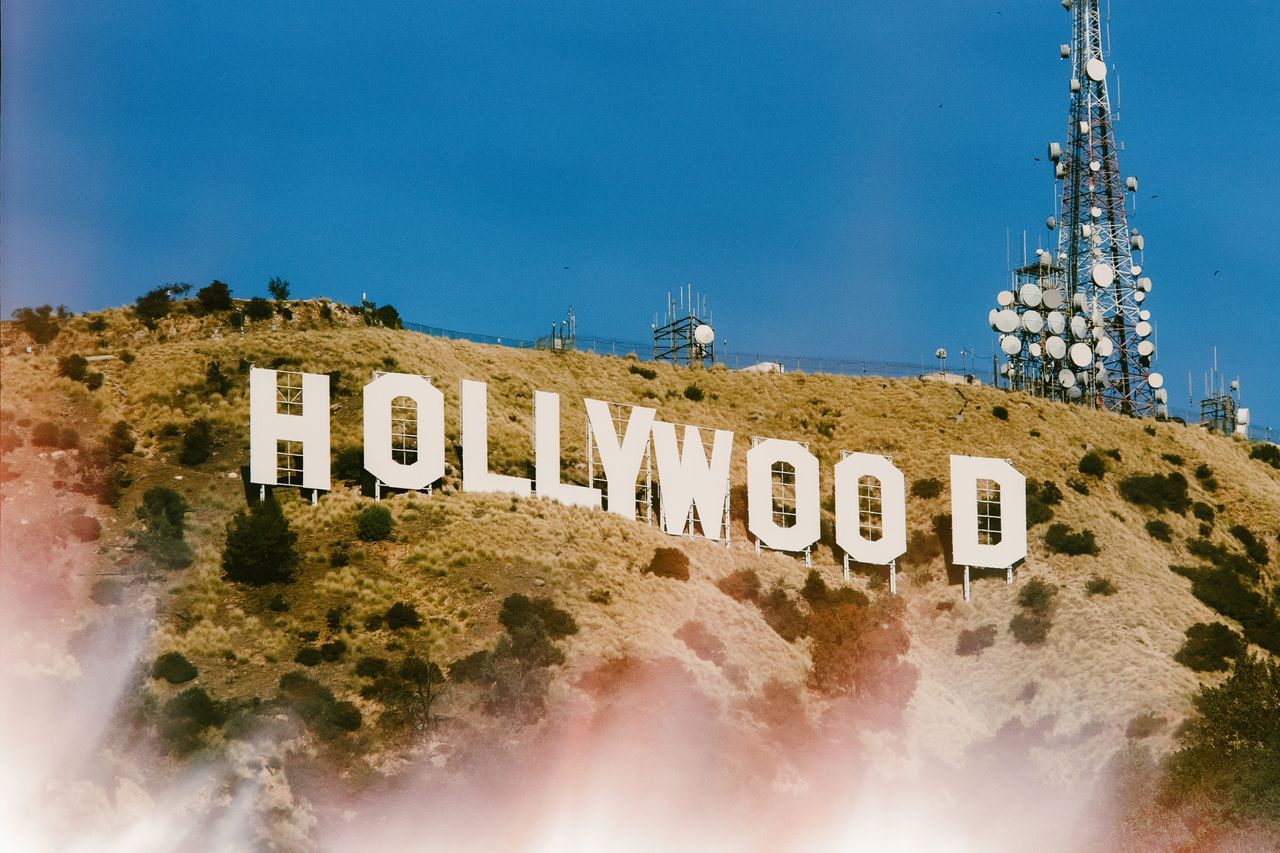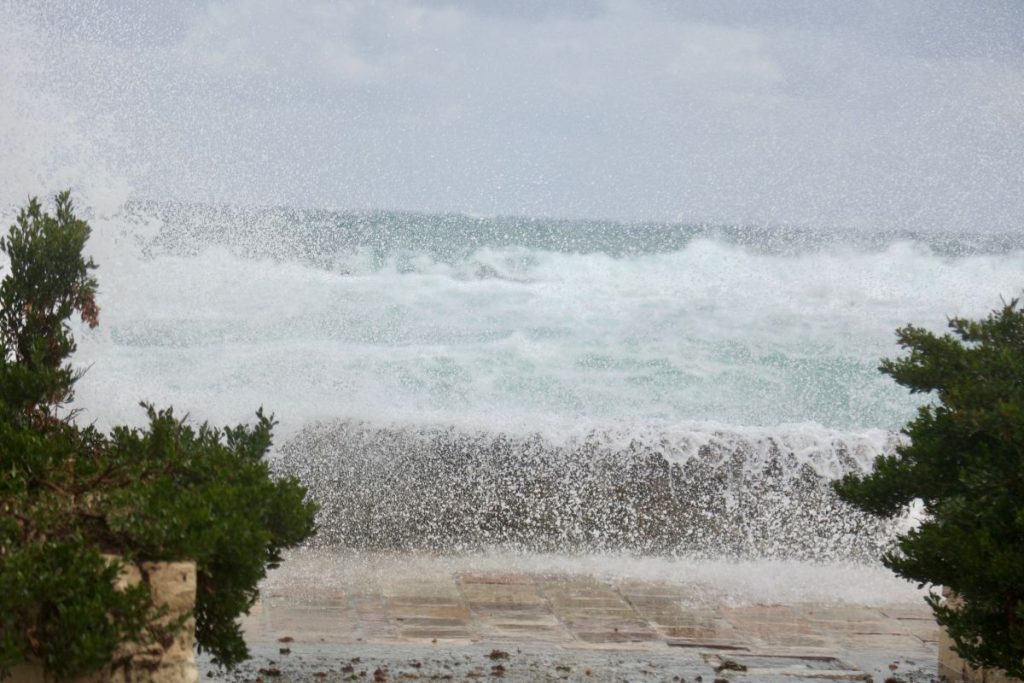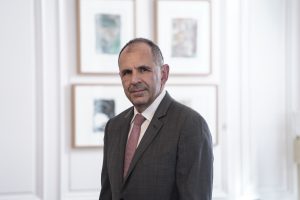“YOU WANT to touch the Hollywood Sign?” asked Jeff Zarrinnam, chairman of the Hollywood Sign Trust, the organization that oversees its preservation, with a laugh. “I think we can arrange that.”
This was my pop-culture holy grail. Like many travelers to Los Angeles, I have hiked the public trail in Griffith Park to the top of Mt. Lee, which offers a distant vision of the famous letters’ backside. It’s a deservedly iconic view, but this felt like a once-in-a-lifetime opportunity for more. I followed Zarrinnam as he unlocked a private security gate in the Hollywood Hills, about 100 feet above the letters, and handed me a rope to hold on to for the scramble down a slippery hillside. “I’m going down first,” he declared with an Indiana Jones flourish. “Wait till I give you the signal!”
Seconds later, I was standing at the base of the 45-foot-tall letters and running my fingers in wonder along their corrugated steel flanks—the H! the O! the L! The letters had been given a fresh lick of white paint in time for the sign’s centennial, officially celebrated on Dec. 8. On that date in 1923, some 3,700 bulbs lit up the original wooden sign erected to advertise “Hollywoodland,” a real estate venture. Before long, officials dropped the “land” and, in 1978, replaced the wood with metal, helping its larger-than-life allure persist.
This connection to Hollywood’s magic dissolved quickly when I headed back down to the fabled neighborhood itself. Like millions who flock there every year, I was dispirited to find that the legendary Hollywood Boulevard needs far more than a new coat of paint. Tawdry souvenir stores and fast-food outlets tarnish the 2,700-plus gilded stars of the Walk of Fame, the whole stretch an in-your-face display of the city’s homelessness crisis. I wove past two men on the verge of a fistfight above Alfred Hitchcock’s star. A woman with a bullhorn demanded that I repent. I retreated into a store and ran into walls of plastic Oscar statuettes in handy assorted sizes.
Hollywood’s decline began in the 1960s, as most major film and TV studios moved to other parts of L.A., and developers demolished Victorian mansions and art-deco landmarks. Though the city revealed a “master plan” to renovate the Boulevard in 2020, much of it remains stalled. Nostalgia, though, can be unrelenting. Hollywood has always managed to reinvent itself, and today its lasting mythology is inspiring some Angelenos to turn the neighborhood’s fortunes around. “Old Hollywood” is back in fashion thanks in part to a spate of cinematic love letters, including Quentin Tarantino’s “Once Upon a Time… in Hollywood,” Damien Chazelle’s “Babylon” and Netflix’s “Hollywood.”
“Old Hollywood is still a powerful brand,” said Victor Corona, a sociologist at Emerson College’s campus on Sunset Boulevard in Hollywood. “People want to be connected to the fantasy, its style and panache. It conjures a mood that is refined but debaucherous.”
To make the fantasy a reality, local entrepreneurs are rescuing and lovingly restoring many atmospheric Old Hollywood venues that might have seemed destined to be destroyed or abandoned. After my close-up with the sign and rude awakening at ground-level, I sought out evidence of renewed Golden Age glamour, hoping to disprove the adage by F. Scott Fitzgerald, who failed to reinvent himself as a Hollywood screenwriter, that there are no second acts in American life.
I started with Grauman’s Egyptian Theatre, built in 1922 at the height of King Tut mania and reopened last month after a $70 million refurbishment by Netflix. Today, visitors can catch 70mm films screened beneath a restored ceiling, adorned with a sun’s gilded rays and a scarab beetle.
A few blocks away, I found the CBS offices, which, in 1938, director William S. Paley commissioned to be designed to echo a giant art-deco transistor radio. Shut for many years, it reopened recently as the club NeueHouse, with the “I Love Lucy” studio now used for concerts.
The hospitality industry is also fueling the renewal. Come nightfall, I passed beneath the jade-green neon sign of the Formosa Cafe, a Chinese-themed hangout for Hollywood royalty since 1939. After closing in 2017, it was defibrillated in 2019 by the 1933 Group, a local company who oversaw a $2.4 million restoration that resurrected many of its original vintage fittings from storage. “You’re in the Elvis booth!” chirped the server, pointing to the memorabilia above me in a glass case. “It was his favorite.” She cheerily noted that, according to lore, John Wayne had passed out drunk beneath the next table. “The next morning, the staff found him scrambling eggs in the kitchen.”
The next morning, I strolled for breakfast to the Clark Street Diner, formerly the 101 Coffee Shop featured in “Swingers” and “Entourage.” Though its pandemic closure distressed Hollywood regulars, it reopened in 2022 under new management and a new name, with a fresh menu heavy on organic ingredients but its ’60s-themed décor left intact.
To experience L.A.’s quirkiest revival I went looking for a hot dog stand from 1946. The appropriately hot-dog-shaped Tail o’ the Pup—where Sigourney Weaver, Andy Warhol and Devo have all, over the years, been photographed—disappeared into a storage unit for more than 15 years, and seemed destined for the scrap heap until it was renovated and reopened last year in a new location. An updated menu mixes classic “pups” with vegan burgers prepared in a kitchen housed, incidentally, in the building where the Doors recorded their last album, “L.A. Woman,” in 1971.
The music business has long infused Hollywood, and today the area where many studios once clustered has been renamed, nostalgically, the Vinyl District. I dropped by Grandmaster Records, where David Bowie and Stevie Wonder once recorded. Remastered in 2021, it’s now an Italian-Australian restaurant with a notable rooftop bar.
Leaving Los Angeles the next morning, I caught a last glimpse of the Hollywood Sign glowing in the sunshine with its shiny fresh paint. I raised my takeaway coffee cup to the many future makeovers that will bring this district’s magical name to life. Who says face-lifts don’t work? Especially in Los Angeles.
HOLLYWOOD HOLDOVERS / Spots That Have Survived the Neighborhood’s Shifting Fortunes
While Hollywood is giving itself a boost by resurrecting vulnerable venues, other Golden Age landmarks never stopped prospering, despite the area’s many ups and downs.
Hollywood Roosevelt Hotel
This Jazz Age classic, host to the first Academy Awards ceremony in 1929, remains an atmospheric base camp for exploring Hollywood. Start your evening like a movie mogul sipping a cocktail beneath the lofty, ornate lobby ceiling, then lounge by the palm-fringed poolside bungalows where Marilyn Monroe lived for two years. For the full retro effect, visit the Spare Room, a speakeasy on the mezzanine level with wooden bowling lanes.
The Magic Castle
Cary Grant was one of this club’s first members when it opened its doors in 1963. Since then, the Victorian-style palace has grown into a prominent live-magic venue with hardly a change, “Mad Men”-era formal dress code included. Nonmembers can visit by invitation or (more easily) by staying at the attached Magic Castle Hotel.
Yamashiro
An enclave of over-the-top kitsch modeled on an ancient palace near Kyoto, this Japanese hilltop staple from 1914 has operated as an Asian-themed restaurant since the early ‘60s and appeared in “Kill Bill: Vol. 1.” Its terrace still offers one of the best views in L.A.
Musso & Frank Grill
Billed as Hollywood’s oldest restaurant—stretching back to 1919, ancient history for this neighborhood—Musso & Frank has been going strong ever since Charlie Chaplin sat in the front window booth to keep an eye on his horse. Since then, it has appeared in films from “Ocean’s Eleven” to “La La Land.” Skip the Old World fare on the food menu and instead sip a Martini at the bar where Al met Brad and Leo in “Once Upon a Time… in Hollywood.”
Boardner’s
This art-deco watering hole, a Hollywood fixture since 1942, famously lured Golden Age stars including Robert Mitchum and Lucille Ball, and was a filming location for “L.A. Confidential.” Its dive-bar counterpart, the Frolic Room, has peddled cheap cocktails since 1930, when it opened as a speakeasy; it went legit in 1934.



